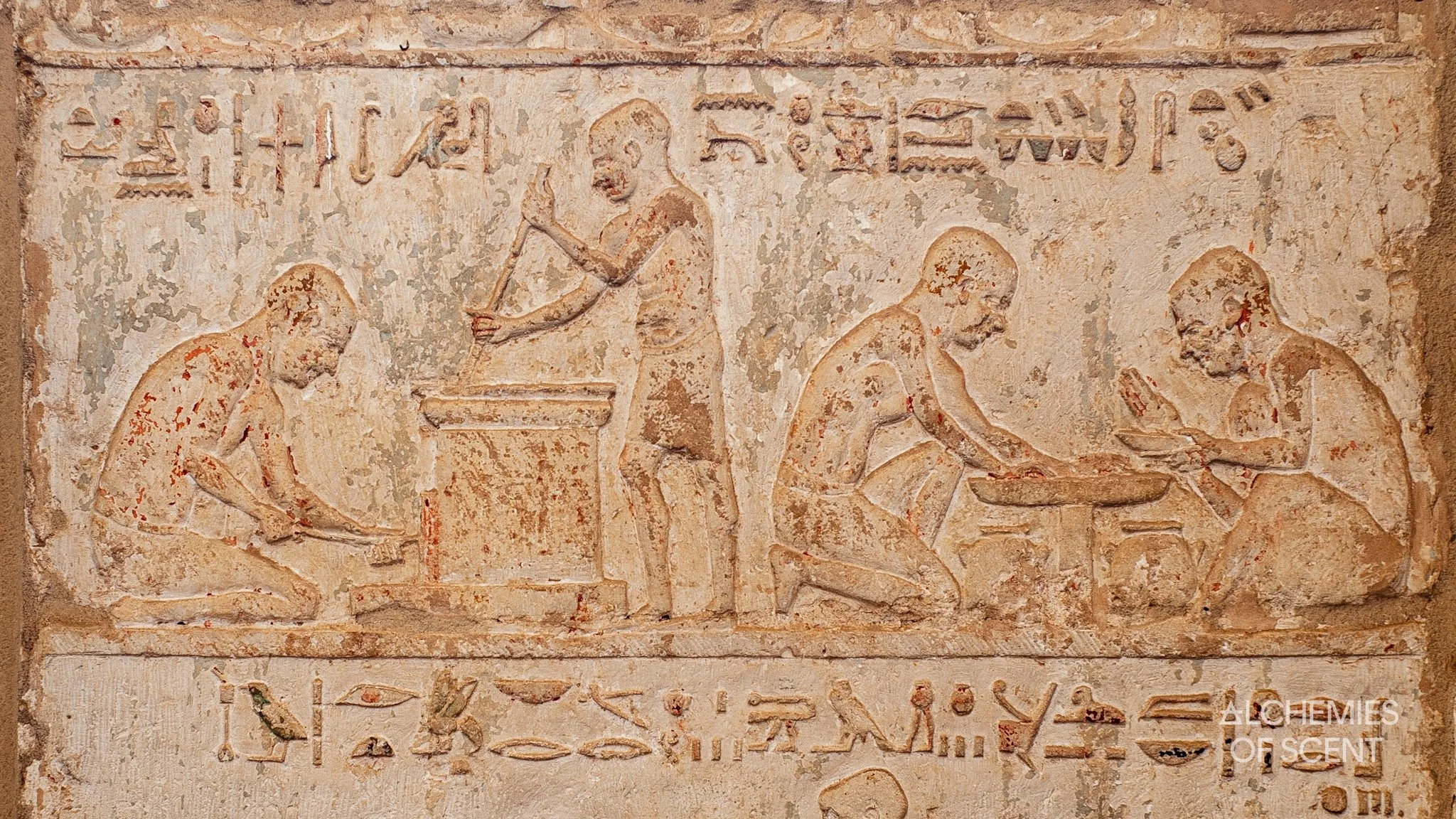Problems and Aims
Aims
The topic of this conference is the production of scented materials (“perfumes”) in the ancient world from multiple perspectives: historical, archaeological, natural scientific, artisanal, cultural, religious.
The conference’s aim is to challenge traditional, monolithic ideas of ancient perfumery cultures ("Egyptian", "Mesopotamian", "Roman") and explore (a) how ingredients and the methods of using scented materials travelled across cultures, land and time, and (b) how perfumery and the production of scented materials varied within the same culture over place and time.
Scope
The conference will include papers on scent traditions from much of antiquity, including Aegean, African, Assyrian, Athenian, Ancient Egyptian, Chinese, Christian, Ancient Greek, Islamicate, Mesopotamian, Minoan, Persian, Pompeiian, Ptolemaic Egyptian, Roman and South Arabian.
Questions
Specific research questions include:
Do familiar linguistic, ethnic, and religious categories used to delineate traditions of ancient perfume production and use—“Assyrian,” “Egyptian,” “Greek,” “Arabic,” “Buddhist,” “Christian,” “Chinese,” etc.— accurately distinguish such traditions and cultures? To what extent can we speak of, for example, “Roman” perfumery, or are there rather many “Roman” traditions across different times, regions, and intentions?
Are there correlations between the manufacture of scented materials and other goods? How were those correlations categorized and understood, e.g., luxury goods, medical, magical, divine, etc.?
Were natural scents compared with, even opposed to, artificial or synthetic ones?
Can we demarcate traditions of ancient perfumery by means of trade networks, equipment, manufacturing techniques? Did know-how and theories of perfume production travel along trade networks?
Did the introduction of new botanical, animal and mineral goods, like musk, camphor, ambergris, etc., coincide with different production techniques?
What do approaches like practical exegesis (or ‘experimental archaeology’) and digital humanities contribute to these questions in a way that might complement traditional ones found in archaeology, archaeometry, philology, classics, history and philosophy?
Multidisciplinary Approach
We are excited to explore work on scented materials and manufacturing in traditions beyond Europe and the Mediterranean shores.
We also believe this project benefits immensely by engaging practitioners who work in contemporary perfumery, olfactory art, scent and the senses. For this reason, the conference includes scholars, perfumers, artists, and practitioners alike.
Output
The output of this conference is a volume provisionally titled, Perfume Production in the Ancient World. Our meeting is the first stage of this process.
Format
The conference is in-person and will involve practical exegesis and demonstrations.

